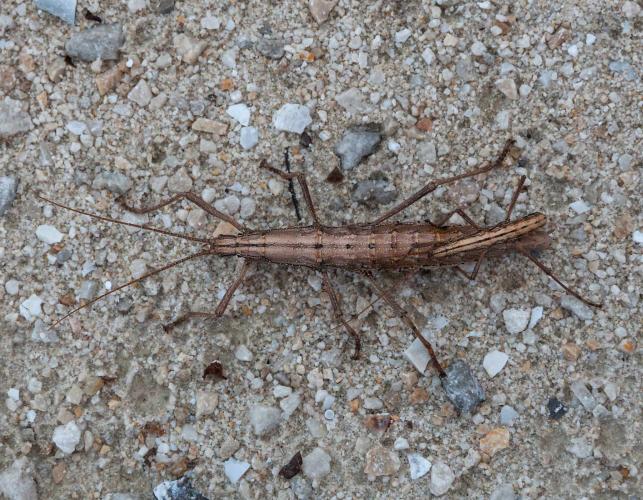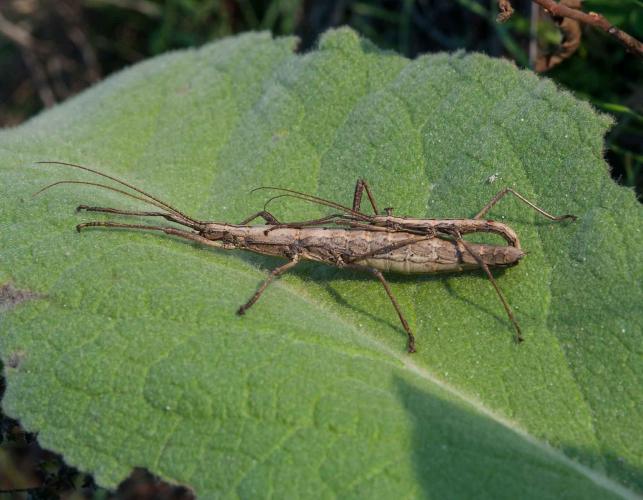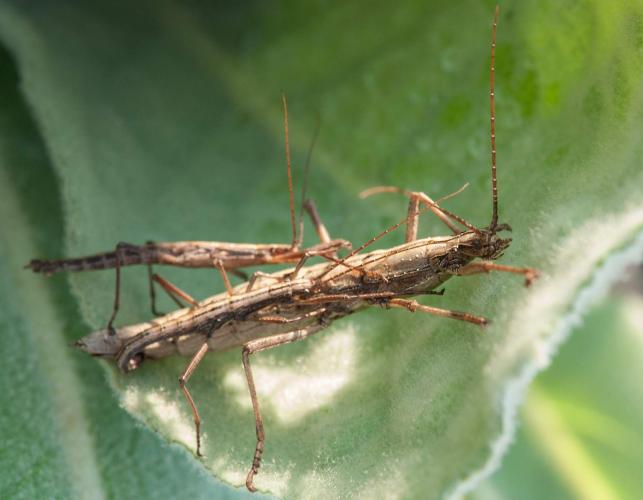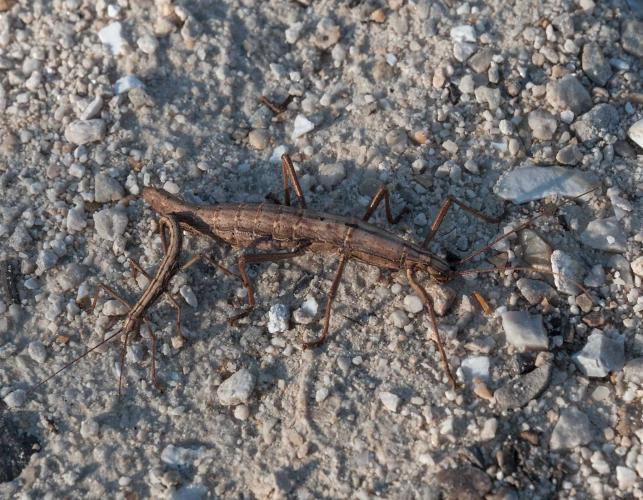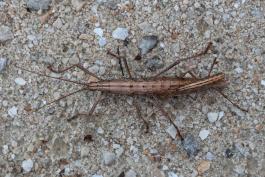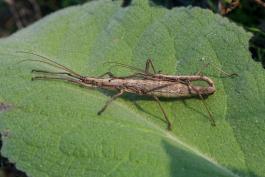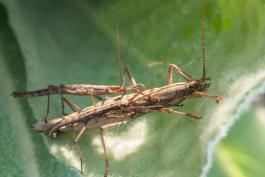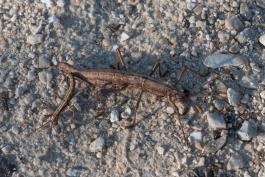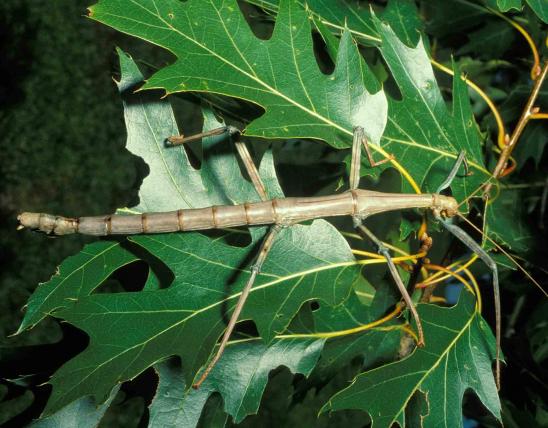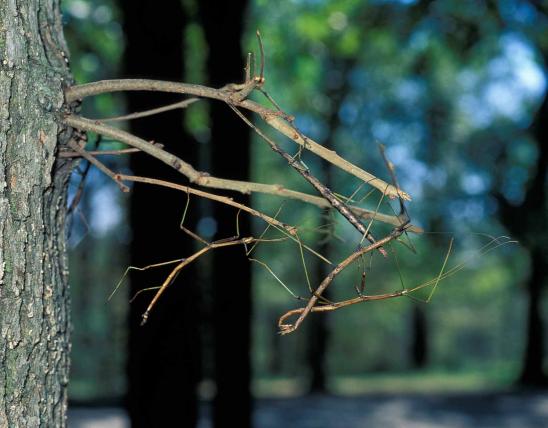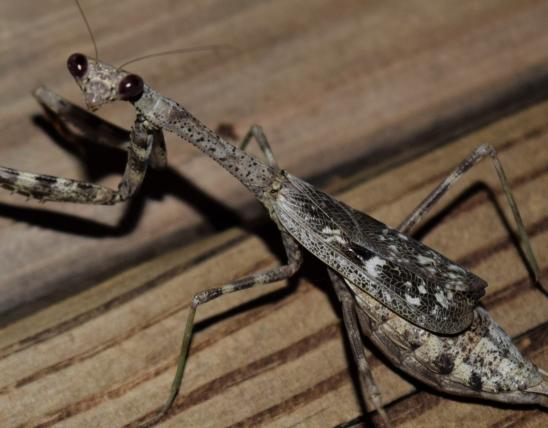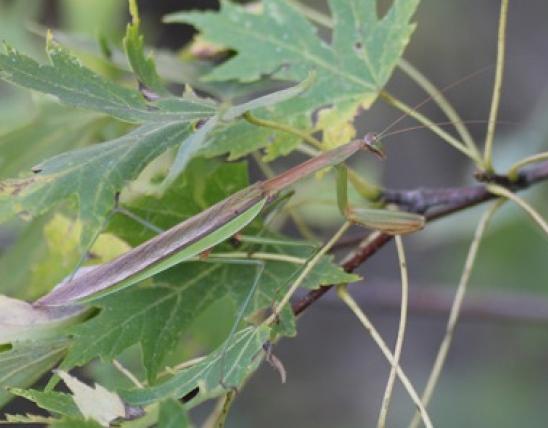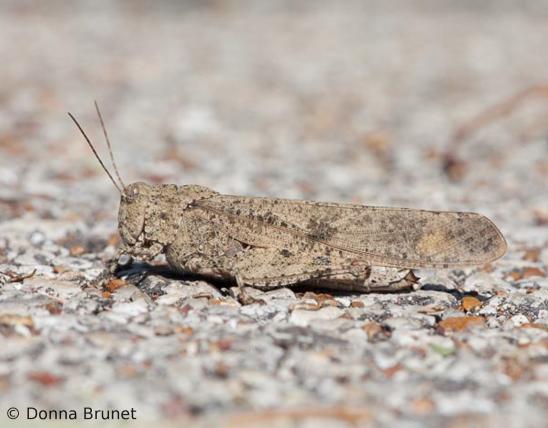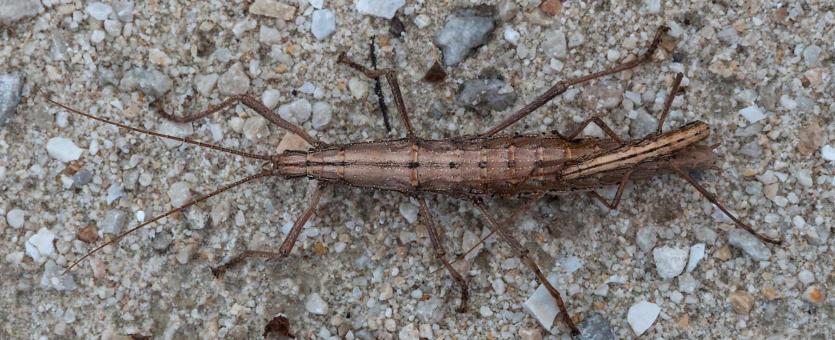
The northern two-striped walkingstick is a tan, brown, or brownish-yellow, elongated insect lacking wings, resembling a short stick. Two-striped walkingsticks are chunkier than our other stick insects. They have 3 lengthwise stripes, though the side pair are often faint or diffuse; the stripe down the middle of the back is usually visible. The cerci (paired appendages at the tip of the abdomen) of females are short and stout. Females are much larger than males. Musk mares are usually seen as mating pairs, with the males riding on the backs of the females.
There are two species of musk mares in the southeast United States. The southern two-striped walkingstick (A. buprestoides) is not known from Missouri. It is a Gulf Coast species, ranging from Texas through Florida to South Carolina. It is larger, darker, and has 3 well-defined lengthwise black stripes. Its head is longer than it is wide. (The head of the northern species is about as long as it is wide, and the stripes on its body are much less distinct.)
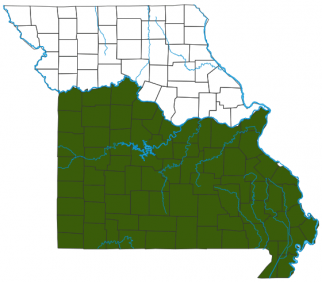
Habitat and Conservation
Food
Status
Life Cycle
Human Connections
The noxious spray of musk mares is well documented, so please use caution around these insects. It is best to simply leave them alone. There is a report of a dog suffering an ulcerated cornea after exposure to these chemicals, but that damage may have been self-inflicted in response to the pain.
Ozark folklorist Vance Randolph reported that Ozarkers instructed their children that it was "bad luck to 'pester' a Devil's horse" (an insect he assumed to be the same thing as a praying mantis), because "the creature is likely to spit tobacco juice in one's eye and perhaps cause blindness." Randolph rightfully questioned the notion of a praying mantis doing such a thing, but perhaps he didn't know about musk mares.
Ecosystem Connections
